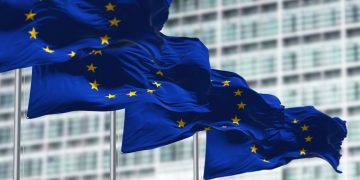In the main scenarios of this year’s BP Energy Outlook, global energy demand continues to grow for at least part of the period to 2050. However, over this time, the structure of energy demand fundamentally shifts, with a declining role for fossil fuels offset by an increasing share for renewable energy and a growing role for electricity. Decisive policy measures, such as significant increases in carbon prices, are needed to deliver a lasting reduction in emissions from energy use.
The 2020 edition of the BP Energy Outlook explores possible paths for the global energy transition, how global energy markets may evolve over the next 30 years and the key uncertainties that may shape them. Looking out to 2050 – a decade further than in previous editions – the Outlook is focused around three main scenarios.
Even as the pandemic has dramatically reduced global carbon emissions, the world remains on an unsustainable path. However, the analysis in the Outlook shows that, with decisive policy measures and more low carbon choices from both companies and consumers, the energy transition still can be delivered,
…BP CEO Bernard Looney commented.
Three scenarios
The 2020 BP Energy Outlook explores the energy transition to 2050 using three main scenarios. These are not predictions but, based on alternative assumptions about policies and societal preferences, are designed to help explore the range of outcomes possible over the next 30 years:
- Rapid assumes the introduction of policy measures, led by a significant increase in carbon prices, that result in carbon emissions from energy use falling by around 70% by 2050 from 2018 levels. Rapid is broadly in line with scenarios that are consistent with limiting the rise in global temperatures by 2100 to well below 2°C above pre-industrial levels.
- Net Zero assumes the policy measures of Rapid are reinforced by significant shifts in societal and consumer behaviour and preferences – such as greater adoption of circular and sharing economies and switching to low carbon energy sources. This increases the reduction in carbon emissions by 2050 to over 95%. Net Zero is broadly in line with a range of scenarios consistent with limiting temperature rises to 1.5°C.
- Business-as-usual (BAU) assumes that government policies, technologies and societal preferences continue to evolve in a manner and speed seen in the recent past. In BAU, carbon emissions from energy use peak in the mid-2020s but do not decline significantly, with emissions in 2050 less than 10% below 2018 levels.
Both the Rapid and Net Zero scenarios assume a significant increase in carbon prices, reaching $250/tonne of CO2 in the developed world by 2050 and $175/tonne in emerging economies.
This is much lower in the BAU scenario, with carbon prices reaching only $65 and $35/tonne CO2 by 2050 on average in developed and emerging economies respectively.
The role of the Energy Outlook is not to predict or forecast how the energy system is likely to change over time. We can’t predict the future; all the scenarios discussed in this year’s Outlook will be wrong. Rather, the Outlook uses these different scenarios to help better understand the range of uncertainty we face as the energy system transitions to a lower carbon world. Improving our understanding of this uncertainty is an important input into designing a strategy that is robust and resilient to the range of outcomes we may face.,
…explained Spencer Dale.
Key points
-Growing energy demand: in all three scenarios, global energy demand grows, driven by increasing prosperity and living standards in the emerging world. Primary energy demand plateaus in the second half of the Outlook in Rapid and Net Zero as improvements in energy efficiency accelerate. In BAU, demand continues to grow throughout the Outlook, reaching around 25% higher by 2050.
-Fundamentally restructured global energy systems: The transition to a lower carbon energy system results in a more diverse energy mix, as all three scenarios see a decline in the share of the global energy system for hydrocarbons and a corresponding increase in renewable energy as the world increasingly electrifies. The scale of the shift varies significantly across the scenarios, with the share of hydrocarbons in primary energy declining from around 85% in 2018 to between 65-20% by 2050 and renewable energy rising to 20-60%.
-Falling demand for oil: The scenarios all see oil demand fall over the next 30 years, 10% lower by 2050 in BAU, around 55% lower in Rapid and 80% lower in Net Zero. In BAU demand plateaus in the early 2020s and in both Rapid and Net Zero oil demand never fully recovers from the fall caused by Covid-19. The decline in oil demand is driven by the increasing efficiency and electrification of road transportation. In all three scenarios the use of oil in transport peaks in the mid- to late-2020s.
The share of oil in meeting transport demand falls from over 90% in 2018 to around 80% by 2050 in BAU, but to 40% in Rapid and to just 20% in Net Zero.
-More resilient gas: The outlook for gas is helped by broad-based demand and the increasing availability of global supplies. Global demand varies significantly across the scenarios. It peaks in the mid-2030s in Rapid and in the mid-2020s in Net Zero, and in those two scenarios by 2050 is broadly similar to 2018 and around a third lower, respectively. In BAU, gas demand increases throughout the next 30 years to be around a third higher by 2050.
Natural gas can potentially play two important roles in an accelerated transition to a low carbon energy system: supporting a shift away from coal in fast growing, developing economies where renewables and other non-fossil fuels may not be able to grow sufficiently quickly to replace coal; and combined with CCUS as a source of (near) zero-carbon power. Gas combined with CCUS accounts for between 8-10% of primary energy by 2050 in Rapid and Net Zero.
-Wind and solar lead fast growth in renewable energy: In all the scenarios, renewables are the fastest growing source of energy over the next 30 years. The share of primary energy from renewables grows from around 5% in 2018 to 60% by 2050 in Net Zero, 45% in Rapid and 20% in BAU. Wind and solar power dominate this growth, underpinned by continuing falls in development costs, lower in 2050 by around 30% and 65% for wind and solar respectively in Rapid and by 35% and 70% in Net Zero. The growth requires a significant acceleration in the build out of renewable capacity. In Rapid and Net Zero the average annual increase in wind and solar capacity over the first half of the Outlook is around 350 GW and 550 GW respectively, compared to the annual average of around 60 GW since 2000.
-The world continues to electrify: Decarbonization of the energy system leads to increasing amounts of final energy use being electrified. By 2050 the share of electricity in total final consumption increases from a little over 20% in 2018 to 34% in BAU, 45% in Rapid and over 50% in Net Zero. The growth of global power generation is dominated by renewable energy, accounting for the entire growth in Rapid and Net Zero and for around three quarters in BAU. The changing fuel mix, combined with the increasing use of CCUS, sees carbon emissions from the power sector decrease by over 80% in Rapid, compared with just 10% in BAU.
–Hydrogen and bioenergy grow: As the energy system progressively decarbonizes, there are increasing roles for both hydrogen and bioenergy. Use of hydrogen increases in the second half of the Outlook in Rapid and Net Zero, particularly in activities which are harder or more costly to electrify. By 2050, hydrogen accounts for around 7% of final energy consumption (excluding non-combusted) in Rapid and 16% in Net Zero. The shift away from traditional hydrocarbons also leads to an increasing role for bioenergy including: liquid biofuels used largely in transport; biomethane which can substitute for natural gas; and biomass used predominantly in the power sector. By 2050, bioenergy accounts for around 7% of primary energy in Rapid and almost 10% in Net Zero.
-The world is on an unsustainable path: The scenarios show that achieving a rapid and sustained fall in carbon emissions is likely to require a series of policy measures, led by a significant increase in carbon prices. These polices may need to be further reinforced by shifts in societal behaviours and preferences.
Delaying these policies measures and societal shifts may significantly increase the scale of the challenge and lead to significant additional economic costs and disruption.
Explore more herebelow:































































